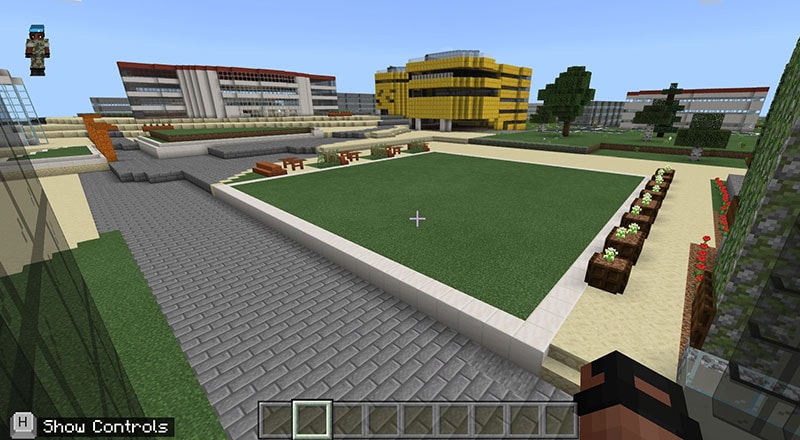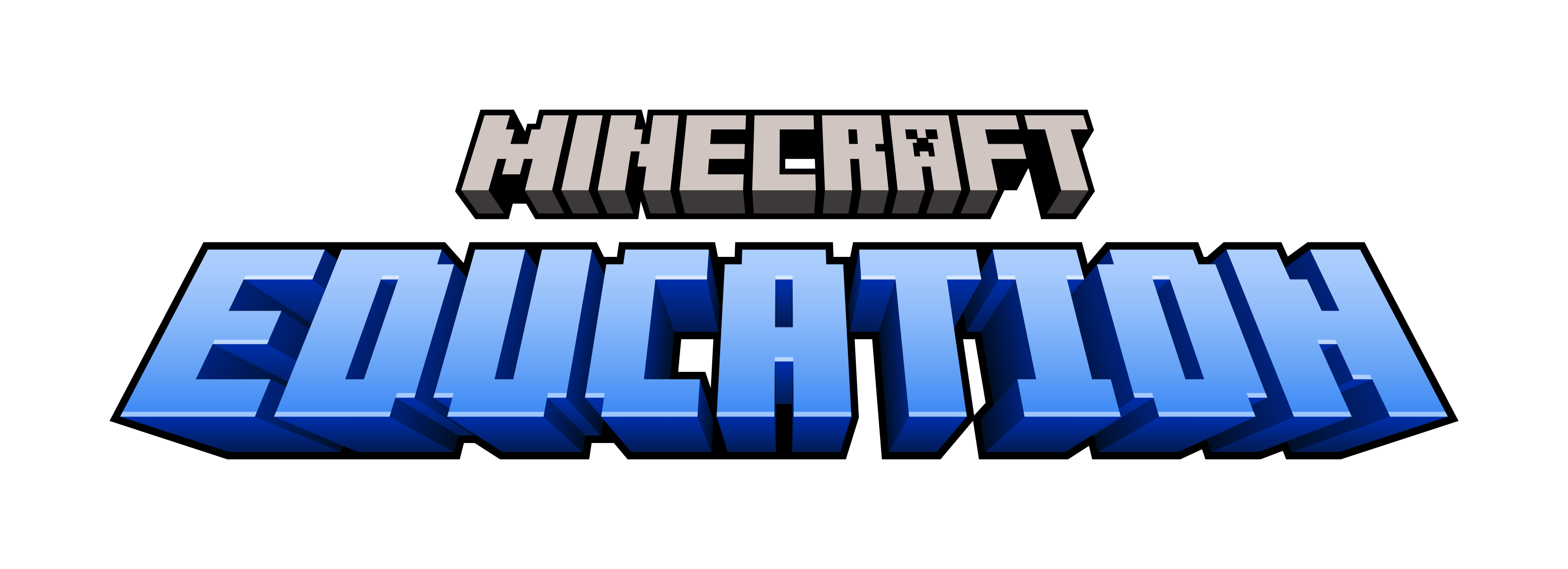Teesside University Welcomes New Students in a Virtual Campus

A resourceful team from Teesside University in the UK came together to help new students connect during the pandemic using Minecraft: Education Edition. Read how they created a beautiful forum where incoming students could meet and build relationships in this guest post by one of the project’s leaders, Dr. Helen Tidy, Principal Lecturer in Learning and Teaching at Teesside’s School of Health and Life Sciences.
Teaching in the COVID era has led to challenges for all of us in education, whether that’s arranging students in onsite classrooms to conducting meaningful and interactive distance learning experiences. A particular problem facing institutions is how to induct students into their university world safely and securely while still providing opportunities for them to meet other new students to form those start-of-term connections that are so important.
This was the problem we faced at Teesside University, based in Middlesbrough in the UK. How can we carry out a completely online university induction and still get the students to talk and interact with each other and establish connections? We all know that teaching online can be a challenging experience, with a virtual classroom of students who refuse to turn on their cameras or answer any questions. Traditionally, we do the “getting to know you” induction session based on some activity or game where the students work in groups to undertake a task. The main aim of the session is remembering classmates’ names and having a giggle. But capturing it in an online environment presents difficulties. And that’s where we thought Minecraft: Education Edition might be the answer!
Firstly, it’s important to provide some context on how we use Minecraft: Education Edition at Teesside University. We are privileged to have Dr. Helen Carney on our staff, who has been innovating with the use of Minecraft in her teaching for about five years now. Dr. Carney has developed the most wonderful virtual field trip that examines biodiversity using Minecraft: Education Edition, which was used this summer by the British Ecological Society. The field trip allows groups of students to interact with each other and their environment within the virtual world. It is this interaction and innovation that we thought we could utilize in establishing a Minecraft-based induction activity. With those thoughts at the forefront of our minds, we established the Teesside University Minecraft Education Induction Team:
- Helen Carney, our team leader and innovator
- Callum Anderson, one of the university’s outdoor activities officers
- Alex Wood, a Ph.D. student who has worked with Dr. Carney on previous Minecraft: Education Edition projects
- Me, Dr. Helen Tidy

We spent the summer of 2020 developing a range of resources to be used in the induction. We wanted something that would be novel, fun, and engaging—an activity students could undertake as part of a team with little or no knowledge of Minecraft to help them get to know their peers and introduce them to Teesside University. The answer was to develop the Magma Challenge, an interactive activity where students work in groups to build a bridge across a pit of lava that has mysteriously appeared on the Teesside University campus. We used a combination of Minecraft: Education Edition and Microsoft Teams to run the sessions, allowing students in each group to talk with each other and their staff mentor while undertaking the task in Minecraft. To help prepare, we provided seven training sessions to approximately 45 academic members of staff to allow them to lead the sessions confidentially.
The activity was designed to be split into three distinct sections. Students undertook the first independently; they were able to wander around our wonderful campus in Minecraft while getting to know the controls. The second is where the use of Microsoft Teams combined with Minecraft: Education Edition came into play. Students would meet with their supervising member of staff in small groups in Teams to be briefed on the activity. Once they were briefed, students joined their groups in the Magma Challenge world, where they worked as a team to build a bridge across the lava while competing against up to three other groups. Verbal communication took place within each group’s Teams channel.
The last part of the activity took place once the challenge had been completed. The supervising member of staff chatted to the students through Teams, discussing how they found the task and bringing the session to a close. In total, students on 15 courses ranging from Dental Hygiene to Airline and Airport Management to Sport and Exercise Science used Minecraft as one of their online induction activities.

To say we had a blast is an understatement! There was plenty of laughter and conversation in all the sessions as students were drawn into the task—and we ran this induction with many students across a variety of courses. I led a session with a group of Animal Sciences students, a particular highlight for me. When they arrived virtually in the Teams group, they were quiet and wouldn’t turn their cameras on. 30 minutes later—and one lava pit successfully conquered—the students were back in our group Teams meeting with their cameras on, animatedly discussing what the best show on Netflix was. We accomplished exactly what the session had set out to achieve: students got to know peers on their courses and began to feel comfortable with them.
The student feedback itself reflects the general feeling of fun and laughter the session created. One Airline and Airport Management student described their experience: “I thought this was really creative and fun. I was laughing quite a lot!” A Business Management student appreciated the game-based aspects of the induction, saying, “It was great building the bridge and falling in the lava lol… it was a good giggle.” Other students’ feedback focused on how helpful it was to get to know the people on their team and put names to faces. The staff were just as keen. One of our staff members described their groups’ reaction to the sessions: “Groups really enjoyed their session, and it really does encourage the students to communicate and work together. Equally, it was a fun activity. I also loved the sessions!”
Minecraft: Education Edition was the perfect solution to our induction problem. It allowed us to create a safe, secure environment where students could get to know the campus and each other. More importantly, it allowed us to accomplish this in a fun and engaging manner. I can’t wait to see where Teesside University’s Minecraft journey goes next!

Find out more about ways to use Minecraft to support students during remote and Hybrid learning. If you’re new to Minecraft: Education Edition, start your journey at education.minecraft.net/get-started.


